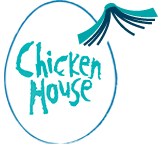Decoding Publishing Jargon: Editorial
We’re all guilty of using jargon, and often don’t consider that other people might not understand what we’re talking about. As an industry, publishing is no exception and certainly has its own language. Having studied Publishing I know I didn’t expect to be unfamiliar with publishing lingo, so I was in for a bit of a shock. I remember sitting in a meeting not long after I’d started working at Chicken House, not knowing what everyone meant when they were talking about ‘ARCs’. Too embarrassed to ask, I made a note and did some stealthy googling when back at my desk.
So for all you aspiring authors out there, including our Times/Chicken House Children's Fiction Competition hopefuls, we’ll be looking to demystify publishing idioms over the next few weeks so you’ll feel fluent in ‘Publishing’ when you get that book contract! This week, here’s our list of editorial jargon decoded.
Editorial terms
There are some editorial terms that are directly related to the edit (structural edit, line edit, copy-edit etc. – see Junior Editor Kesia’s post on the Editorial process). However, there is also a bit of jargon we use later on in the process.
Page proofs – there is some confusion when publishers talk about proofs (there are many types! See bound proofs too). Page proofs are typeset pages of a manuscript, laid out in pages (but not bound). These are sent to the author and proofreader for a final check before printing.
Collation – the production manager receives the corrected page proofs from the proofreader and author, collates the corrections and sends them on to the typesetter and ensures they’re implemented.
Style sheet/house style – each publisher has a house style which is a guide detailing preferred spelling, punctuation and grammar. Copy-editors and proofreaders are given a style sheet which details the publisher’s house style so they can ensure that a book consistently conforms to it. For example, Chicken House’s house style includes using –ize and –t word endings (rather than –ise and –ed endings).
Mark up – when a proofreader or production manager adds corrections to page proofs, this is called marking up. This is to instruct the typesetter to amend, delete or insert text. British Standards Institution symbols are used to avoid confusion over what corrections need to be made.
Literary agents/literary agency – a person or group of people who represent an author and their work. The agent will submit the author’s work to publishers for consideration, and negotiate deals with publishers. The agent represents the author’s interests and receives a percentage of the author’s income. Publishers generally only accept manuscripts submitted by literary agents, so getting an agent is one of the first ports of calls for aspiring authors (unless you’re entering the Times/Chicken House Children's Fiction Competition!).
Synopsis – a breakdown of the plot (not to be confused with a blurb, which is more of a selling tool). A synopsis outlines the story, including all major plot points and character development. It must contain all spoilers, as a synopsis is an important part of a submission for an agent or publisher – they need to know what happens, and they need to know fast.
What haven't we explained? Tweet us at @chickenhsebooks!

No comments yet!
Why not be the first?